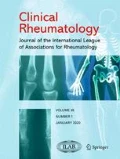Abstract
Higher levels of moderate to vigorous physical activity improve all-cause mortality and cardiovascular events. However, the effect of running, a moderate to vigorous activity, in those with knee osteoarthritis (OA), a common arthritis that occurs with aging, a high-risk group for mortality and cardiovascular events, is unclear. Therefore, we aimed to evaluate the association of self-selected running on OA symptom and structure progression in people with knee OA. This nested cohort study within the Osteoarthritis Initiative (OAI) (2004–2014) included those at least 50 years old with OA in at least one knee. Runners were defined using a self-administered questionnaire at the 96-month visit. At baseline and 48-months, symptoms were assessed and radiographs were scored for Kellgren-Lawrence (KL) grade (2–4) and medial Joint Space Narrowing (JSN) score (0–3). We evaluated the association of self-selected running with outcomes: KL worsening, medial JSN worsening, new knee pain, and improved knee pain over 48 months, adjusting for baseline age, sex, body mass index (BMI), KL score, contralateral KL score, contralateral knee pain, and injury. If data were not available at the 48-month visit, then they were imputed from the 36-month visit. One thousand two hundred three participants had a mean age of 63.2 (7.9) years, BMI of 29.5 (4.6) kg/m2, 45.3% male, and 11.5% runners. Data from 8% of participants required imputation. Adjusted odds ratios for KL grade worsening and new frequent knee pain were 0.9 (0.6–1.3) and 0.9 (0.6–1.6) respectively. Adjusted odds ratio for frequent knee pain resolution was 1.7 (1.0–2.8). Among individuals 50 years old and older with knee OA, self-selected running is associated with improved knee pain and not with worsening knee pain or radiographically defined structural progression. Therefore, self-selected running, which is likely influenced by knee symptoms and may result in lower intensity and shorter duration sessions of exercise, need not be discouraged in people with knee OA.


Similar content being viewed by others
References
Organization, W.H (2010) Global recommendations on physical activity for health. World Health Organization, Switzerland
Blair SN, Kohl HW 3rd, Paffenbarger RS Jr, Clark DG, Cooper KH, Gibbons LW (1989) Physical fitness and all-cause mortality. A prospective study of healthy men and women. JAMA 262(17):2395–2401
Paffenbarger RS Jr et al (1986) Physical activity, all-cause mortality, and longevity of college alumni. N Engl J Med 314(10):605–613
Paffenbarger RS Jr et al (1993) The association of changes in physical-activity level and other lifestyle characteristics with mortality among men. N Engl J Med 328(8):538–545
Cross M, Smith E, Hoy D, Nolte S, Ackerman I, Fransen M, Bridgett L, Williams S, Guillemin F, Hill CL, Laslett LL, Jones G, Cicuttini F, Osborne R, Vos T, Buchbinder R, Woolf A, March L (2014) The global burden of hip and knee osteoarthritis: estimates from the global burden of disease 2010 study. Ann Rheum Dis 73(7):1323–1330
Dai S et al (2015) Participation in types of physical activities among US adults—national health and nutrition examination survey 1999-2006. J Phys Act Health 12(Suppl 1):S128–S140
Lane N, Buckwalter JA (1993) Exercise: a cause of osteoarthritis? Rheum Dis Clin North Am 3:617–633
Lane NE, Bloch DA, Wood PD, Fries JF (1987) Aging, long-distance running, and the development of musculoskeletal disability: a controlled study. Am J Med 82(4):772–780
Lane NE, Bloch DA, Hubert HB, Jones H, Simpson U, Fries JF (1990) Running, osteoarthritis, and bone density: initial 2-year longitudinal study. Am J Med 88(5):452–459
Lane NE, Michel B, Bjorkengren A, Oehlert J, Shi H, Bloch DA, Fries JF (1993) The risk of osteoarthritis with running and aging: a 5-year longitudinal study. J Rheumatol 20(3):461–468
Lane NE, Bloch DA, Jones HH, Marshall WH Jr, Wood PD, Fries JF (1986) Long-distance running, bone density, and osteoarthritis. JAMA 255(9):1147–1151
Panush RS, Schmidt C, Caldwell JR, Edwards NL, Longley S, Yonker R, Webster E, Nauman J, Stork J, Pettersson H (1986) Is running associated with degenerative joint disease? JAMA 255(9):1152–1154
Chakravarty EF, Hubert HB, Lingala VB, Zatarain E, Fries JF (2008) Long distance running and knee osteoarthritis. A prospective study. Am J Prev Med 35(2):133–138
Kettunen JA, Kujala UM, Kaprio J, Koskenvuo M, Sarna S (2001) Lower-limb function among former elite male athletes. Am J Sports Med 29(1):2–8
Kujala UM, Kettunen J, Paananen H, Aalto T, Battie MC, Impivaara O, Videman T, Sarna S (1995) Knee osteoarthritis in former runners, soccer players, weight lifters, and shooters. Arthritis Rheum 38(4):539–546
Lo GH, Driban JB, Kriska AM, McAlindon TE, Souza RB, Petersen NJ, Storti KL, Eaton CB, Hochberg MC, Jackson RD, Kent Kwoh C, Nevitt MC, Suarez-Almazor ME (2017) Is there an association between a history of running and symptomatic knee osteoarthritis? A cross-sectional study from the osteoarthritis initiative. Arthritis Care Res (Hoboken) 69(2):183–191
Williams PT (2013) Effects of running and walking on osteoarthritis and hip replacement risk. Med Sci Sports Exerc 45(7):1292–1297
Kriska AM et al (1988) The assessment of historical physical activity and its relation to adult bone parameters. Am J Epidemiol 127(5):1053–1063
Chasan-Taber L, Erickson JB, McBride J, Nasca PC, Chasan-Taber S, Freedson PS (2002) Reproducibility of a self-administered lifetime physical activity questionnaire among female college alumnae. Am J Epidemiol 155(3):282–289
Radiographic (x-ray) manual (version 2.1, 8–23-2006) (2006) December 17, 2015. Available from: https://oai.epi-ucsf.org/datarelease/OperationsManuals.asp
Project 15 Test-Retest Reliability of Semi-quantitative Readings from Knee Radiographs (2016) Cited 2017 February 3. Available from: https://oai.epi-ucsf.org/datarelease/SASDocs/kXR_SQ_Rel_BU_descrip.pdf
Altman RD, Gold GE (2007) Atlas of individual radiographic features in osteoarthritis, revised. Osteoarthr Cart 15(Suppl A):A1–56
O'Reilly SC, Muir KR, Doherty M (1996) Screening for pain in knee osteoarthritis: which question? Ann Rheum Dis 55(12):931–933
The Osteoarthritis Initiative (2008) Knee injury and surgery OAI follow-up visit workbook. Available from: https://oai.epi-ucsf.org/datarelease/forms/FUWQ07_496.pdf?V01INJR12
DeSantana JM, Santana-Filho VJ, Guerra DR, Sluka KA, Gurgel RQ, da Silva WM Jr (2008) Hypoalgesic effect of the transcutaneous electrical nerve stimulation following inguinal herniorrhaphy: a randomized, controlled trial. J Pain 9(7):623–629
DeSantana JM, Walsh DM, Vance C, Rakel BA, Sluka KA (2008) Effectiveness of transcutaneous electrical nerve stimulation for treatment of hyperalgesia and pain. Curr Rheumatol Rep 10(6):492–499
Neogi T, Guermazi A, Roemer F, Nevitt MC, Scholz J, Arendt-Nielsen L, Woolf C, Niu J, Bradley LA, Quinn E, Frey Law L (2016) Association of joint inflammation with pain sensitization in knee osteoarthritis: the multicenter osteoarthritis study. Arthritis Rheumatol 68(3):654–661
Kujala UM, Kaprio J, Sarna S (1994) Osteoarthritis of weight bearing joints of lower limbs in former elite male athletes. BMJ 308(6923):231–234
Konradsen L, Hansen EM, Sondergaard L (1990) Long distance running and osteoarthrosis. Am J Sports Med 18(4):379–381
Funding
Dr. Lo is supported by K23 AR062127, an NIH/NIAMS funded mentored award, providing support for design and conduct of the study, analysis, and interpretation of the data; and preparation and review of this work. Dr. Suarez-Almazor is supported by K24 AR053593, funded by NIH/NIAMS. This work is supported in part with resources at the VA HSR&D Center for Innovations in Quality, Effectiveness and Safety (#CIN 13-413), at the Michael E. DeBakey VA Medical Center, Houston, TX. The Osteoarthritis Initiative is a public-private partnership comprised of five contracts (N01-AR-2-2258; N01-AR-2-2259; N01-AR-2-2260; N01-AR-2-2261; N01-AR-2-2262) funded by the National Institutes of Health, a branch of the Department of Health and Human Services, and conducted by the Osteoarthritis Initiative Study Investigators. Private funding partners include Merck Research Laboratories; Novartis Pharmaceuticals Corporation, GlaxoSmithKline; and Pfizer, Inc. Private sector funding for the Osteoarthritis Initiative is managed by the Foundation for the National Institutes of Health.
Author information
Authors and Affiliations
Corresponding author
Ethics declarations
Disclosures
None.
Disclaimer
The content is solely the responsibility of the authors and does not necessarily represent the official views of the National Institute of Arthritis and Musculoskeletal and Skin Diseases, the National Institutes of Health, or the Department of Veterans Affairs.
Rights and permissions
About this article
Cite this article
Lo, G.H., Musa, S.M., Driban, J.B. et al. Running does not increase symptoms or structural progression in people with knee osteoarthritis: data from the osteoarthritis initiative. Clin Rheumatol 37, 2497–2504 (2018). https://doi.org/10.1007/s10067-018-4121-3
Received:
Revised:
Accepted:
Published:
Issue Date:
DOI: https://doi.org/10.1007/s10067-018-4121-3




